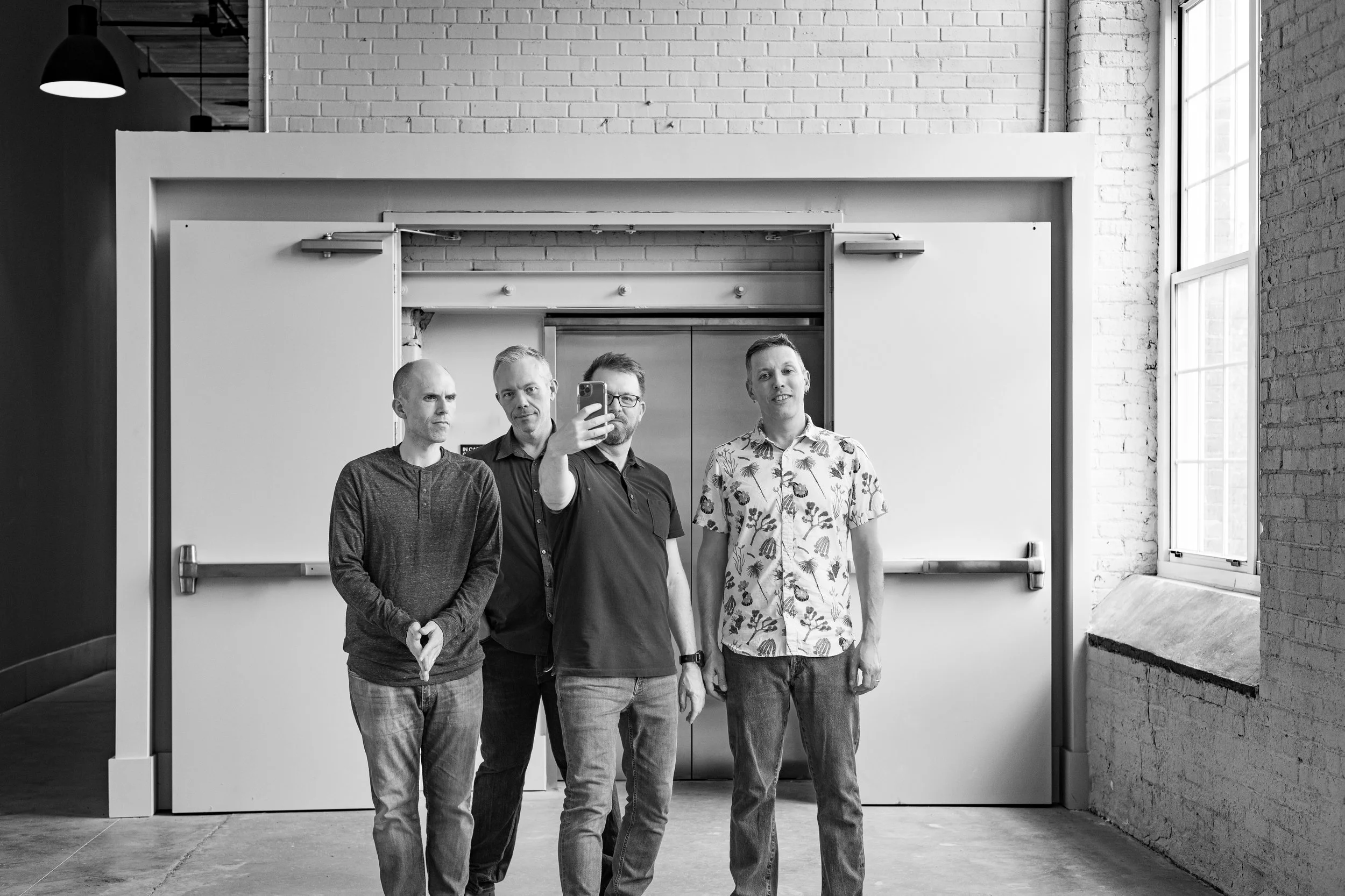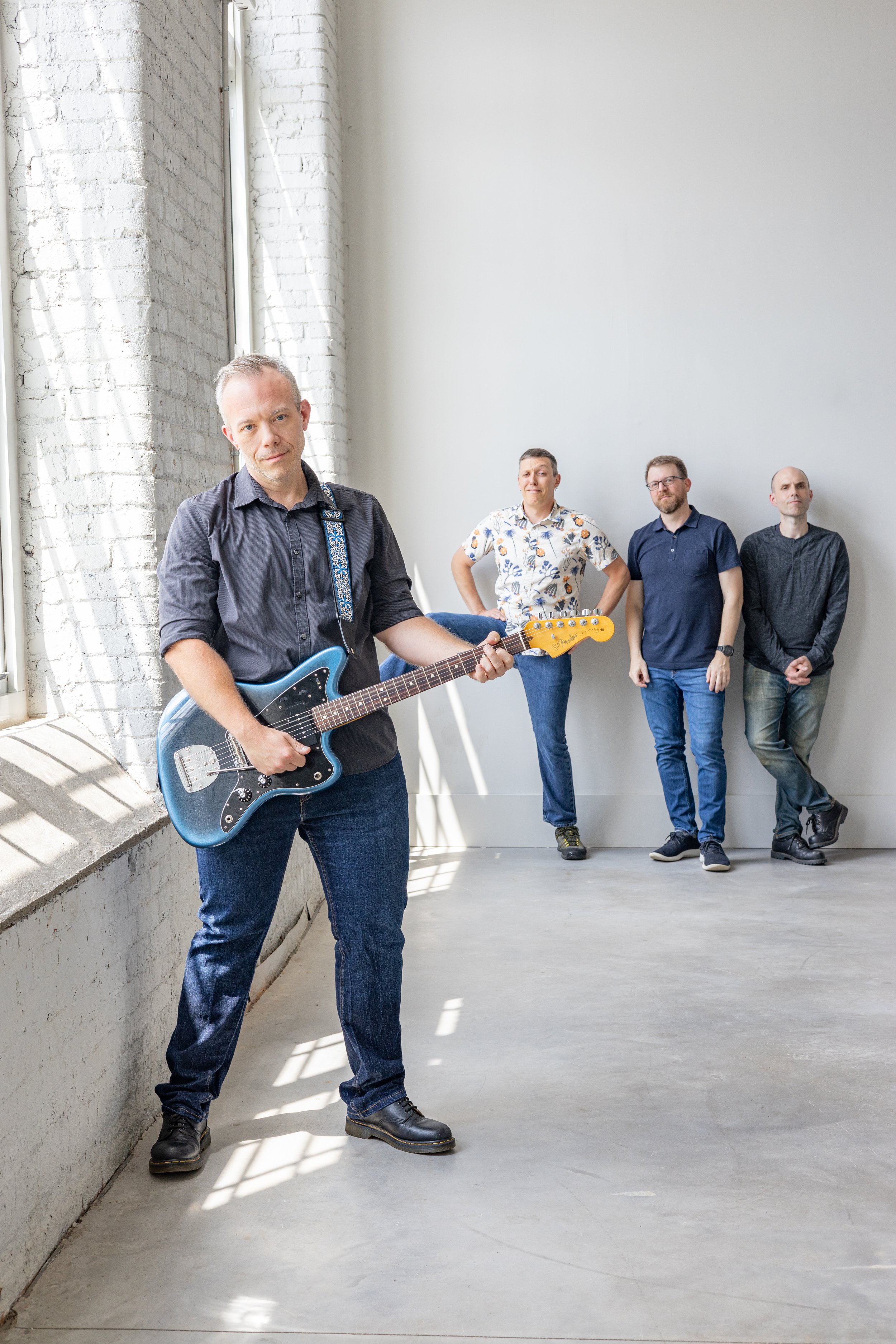Sharks and Minnows was born in Atlanta, Georgia, just shy of the 21st century. Originally the trio of Dan Heisel, Christopher Simony, and Chad Spangler, the band fit in with their punk and indie rock peers. Before they reached their first birthday, the band recorded their loud-and-fast debut ep, Julie et cetera, featuring their live staple, “Sleeping Sickness.” Sharks and Minnows was ready known for their emotionally raw live shows, and the ep accurately demonstrated the band’s coltish, driving sound. Dissatisfied with the inflexibility of genre, however, the Sharks began a sonic evolution that marked their first five years. When they confronted the fact that they were more than just a rock band, everything changed. They became dazzlingly prolific; they grew fearless in their artistic choices; and they developed more nuanced, experimental approach to music making.
Their first LP, Light as a Feather, Stiff as a Board, showed that while band’s sense of rock abandon had not faded, they were more comfortable to leave space for acoustic guitars, piano, and hushed vocals. The album featured the standout song, “Fainthearted,” which drew attention from college radio across the Southeast. On the heels of the album’s release, the Discovery Channel sought the band for soundtrack work.
In 2003, Sharks and Minnows took up parttime residence in Athens, Georgia, where they added multi-instrumentalist Devin Simony to their line-up and teamed with producer Eric Friar to complete their second LP, the eclectic, textured The Cost of Living. Treating the studio as an instrument itself, Sharks and Minnows revealed their experimental spirit, incorporating danceable polyrhythms, electronic percussion, and lush ambience into their established indie rock sound. The album was widely acclaimed, yielding college radio hits “Sunday Driver,” “Cleopatra Song,” and “Statue of Marie.”
With a fourth album all but complete, and with The Cost of Living catching attention at home and internationally, Sharks and Minnows surprised their following (and themselves) by going on indefinite hiatus, pausing to concentrate on their families, relationships, and other labors of love. During that time, the band’s members flirted with other musical endeavors, but every project felt like an infidelity.
Having shared stages with Jets to Brazil, the Dismemberment Plan, Rainer Maria, Jason Molina, and even Biz Markie(!), Sharks and Minnows always relished the opportunity to participate in unique shows. Unsurprisingly, the band reunited in 2011 for a one-off gig with their hero, Hüsker Dü’s Grant Hart. A quick performance in Athens followed.
For the remainder of the decade, the rest was silence. The band could have never imagined that they would next share a room over a decade later.
Like so many recent stories, Sharks and Minnows’ revival gained momentum during the pandemic. Now populating two coasts, the Sharks were reborn during quarantine, recording in home studios, save for a long weekend in Atlanta. Though discussing the band’s maturity seems obligatory, their new work is remarkable for an expanded vision and finer strokes. They hop genres like Yo La Tengo, summon big emotions like Arcade Fire, and craft exquisite pop songs like Elvis Costello, all the while sounding like no one other than themselves.
With a kaleidoscopic vision and cinematic sound, Sharks and Minnows now returns for their second act.





